Nagasaki Kaido Road Course

Maintained Since the Edo Period, People Have Travelled Back and Forth on the Nagasaki Kaido Highway for Years. Bike Around the Old Road in Kita-Kyushu City Which Still Retains the Appearance of Long Ago.
The Nagasaki Kaido Road is one of the side highways build in the Edo Period. It starts in Tokiwabashi Bridge in Kokura-kita Ward and ends in Nagasaki City, Nagasaki Prefecture. Stretching 223km, it has 25 way stations along its route. Three post stations are located in Kita-Kyushu Kokura-juku; Kurosaki-juku (Kurosaki, Yahata-nishi Ward, Kita-Kyushu City) and Koyanose-juku (Yawata-nishi Ward, Kita-Kyushu City). If you travel along the road, you will be able to encounter reflections from the past in places along the way.

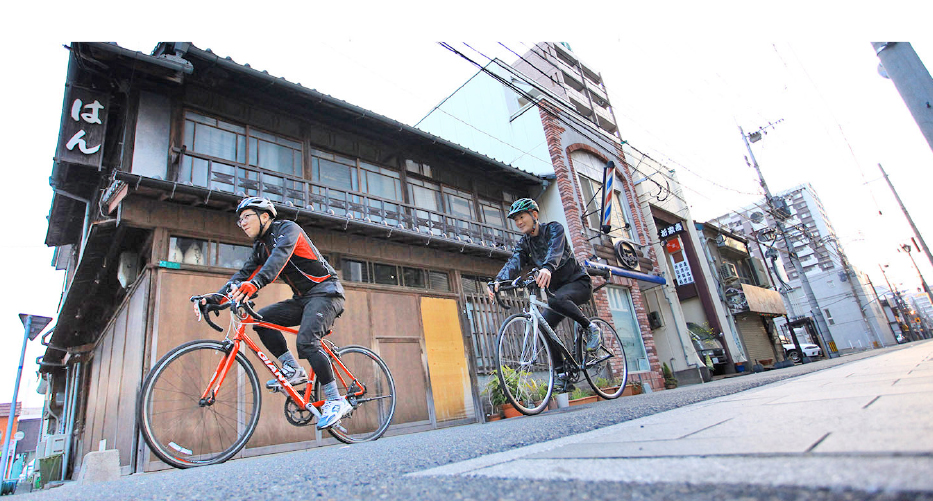
Ride Your Bike on the Nagasaki Kaido Road Stretching from Kokura to Nagasaki
The starting point for the long Nagasaki Kaido Road, extending from Buzen-no-Kuni Kokura (Kokura-kita Ward, Kita-Kyushu City) to Hizen-no-Kuni Nagasaki (present day Nagasaki) is the Tokiwabashi Bridge which commands a view of the nearby Riverwalk Kita-Kyushu. This beautiful wooden bridge was modelled after bridges of years ago, and a story has survived that in an elephant presented to the shogun, Tokugawa Yoshimune, travelled across the bridge in 1729. We decided to travel the Kita-Kyushu City’s Nagasaki Kaido Road together with two cyclists on the bridge we rendezvoused with who were going in the same direction,
From Tokiwabashi Bridge Going in the Direction of Nishi-Kokura Station
From Tokiwabashi Bridge enter the back street and ride straight in the direction of Nish-Kokura Station. At various places along the way will be the words “Nagasaki Kaido Road” inscribed somewhere, a reminder that long ago people travelled back and forth along the Nagasaki Kaido Road.
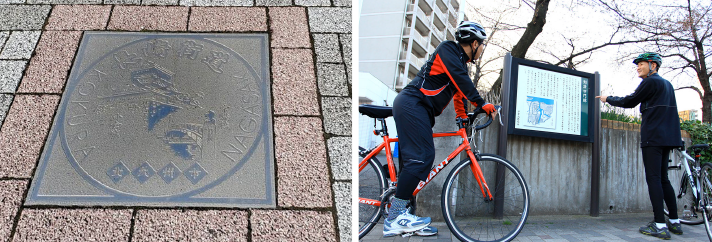
Itozuguchi Entrance, Kokura Castle
There are both cars and people travelling along the road, so stop temporarily where the road intersects. If there are a lot of people passing by, then get off and push your bike. Once going beyond Nishi-Kokura Station, travel south in the direction of Itozu. When you get close to the Kokura-nishi Post Office, you should be able to spot the explanation panel for “Itozu Entrance Remains.” The Itozu Entrance was one of 10 entrances and exits at Kokura Castle. In other words, during the days of the Kokura Castle, the castle perimeter extended up until there.
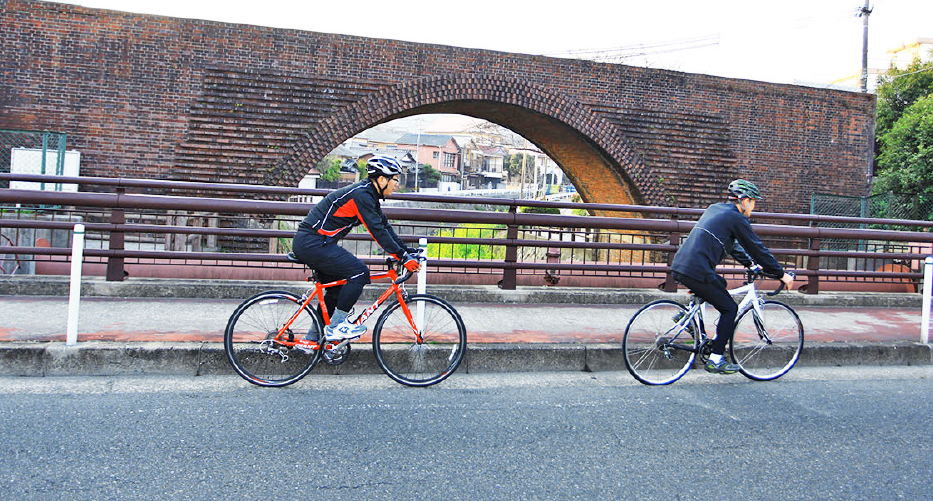
The Beautiful Brick Kyushu Railway Chayamachi Bridge is an Absolute Must-See
If you potter for a while around the quiet back streets, you will come across the brick Kyushu Railway Chayamachi Bridge. These are the remains of the Okura Line which was built in the Meiji Period by the Kyushu Railway, the first railway opened in Kyushu. One of the features of the bridge is the unevenness of the side wall called “getappa.” Extending the bricks to the uneven portions increased the overall strength of bridge and was done in preparation should multiple lines be added in the future. Amid the residential area with all the apartments and houses, the bridge commands an impactful presence.
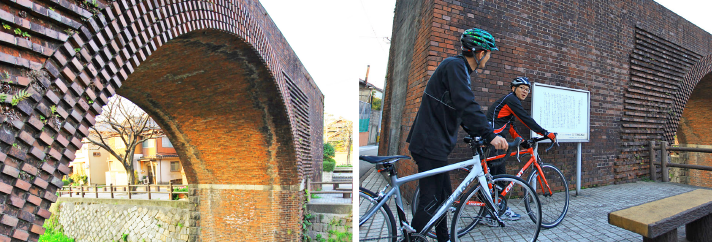
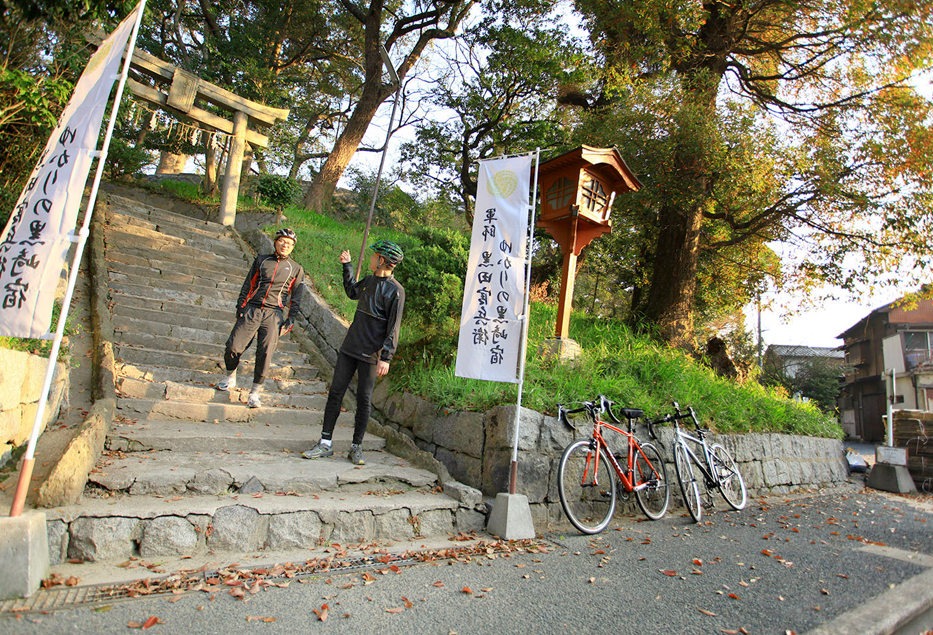
Dropping in to the Kasuga Shrine Associated with Kuroda Kanbei
After the bridge, while threading through the residential area, ride in the direction of Kurosaki which occasionally merges with Prefectural Route 296 and National Route 3. Along the way are places to see, such as Itozu-no-Mori Zoological Park, Kita-Kyushu Municipal Museum of Art, and Korodai Park. After going past the front of the Momozono Baseball Stadium and arriving a Kurosaki, drop into the Kasuga Shrine. The shrine has attracted considerable attention as the shrine that enshrines the historical figures of Kuroda Kanbei, Kuroda Nagamasa, and the 24 Kuroda Cavalries. Images of the 24 Kuroda Cavalries and hanging pictures of them are stored there. This is definitely a place for history buffs.
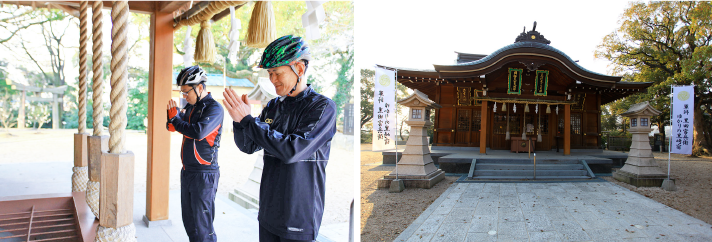
Exploring the Inn Town of Kurosaki
At the one time, there was the Kurosaki Inn on the Nagasaki Kaido Road in Kurosaki. In the Kumate Gintengaimae shopping area on the Nagasaki Kaido Road you can see a culvert which brings back memories of the Naka River which once flowed through the area. At the entrance of the shopping area there is a gate bearing the words “Kurosaki Inn,” which conjures up images of travelers who stopped there for a brief rest while travelling.
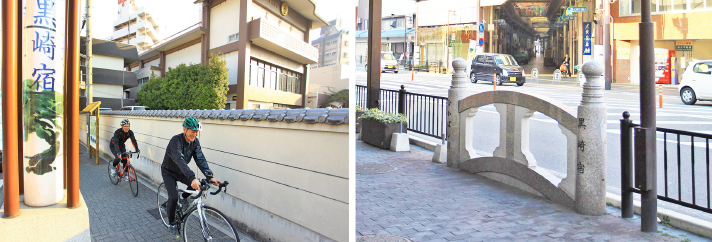
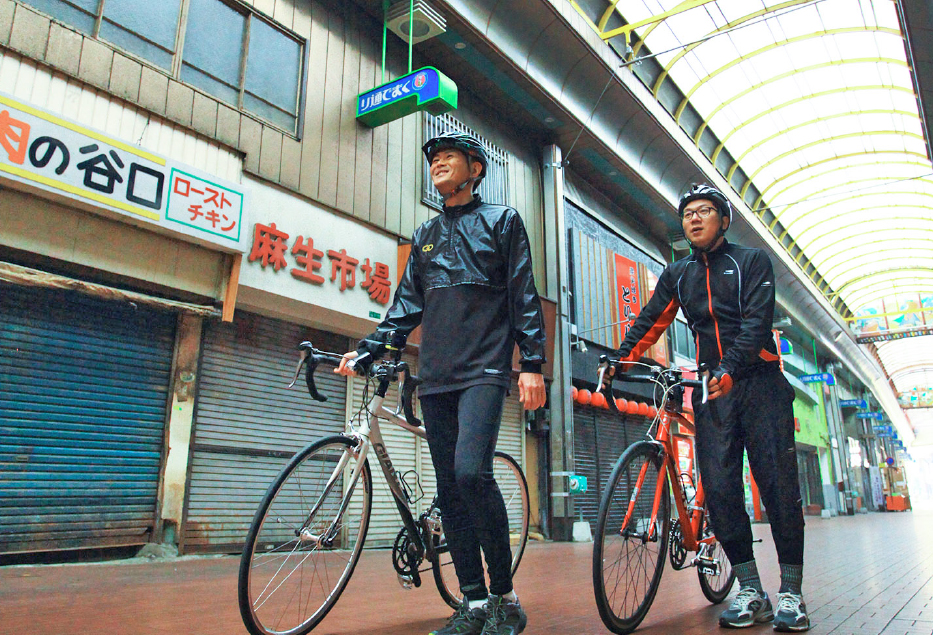
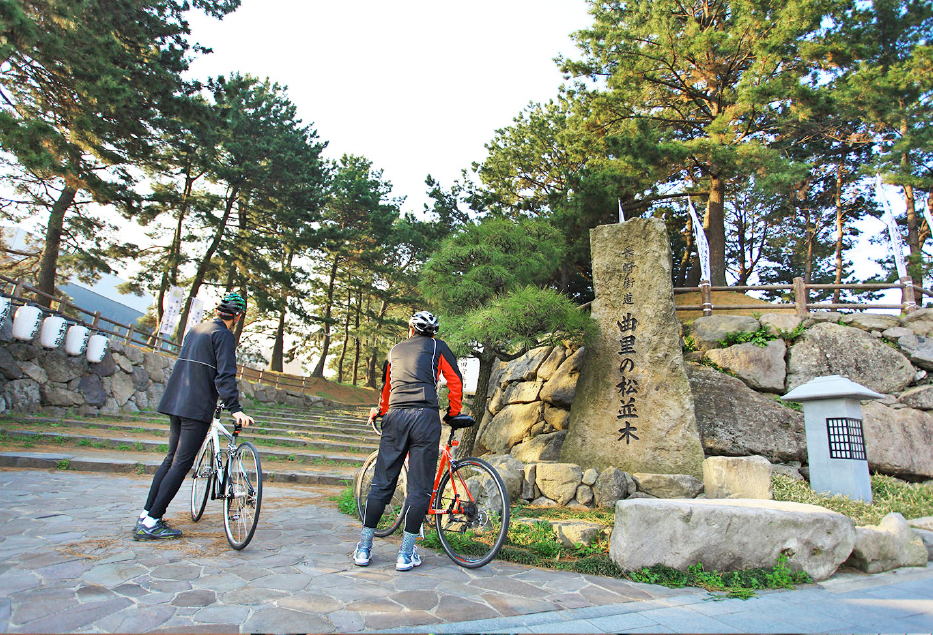
Walk Along the Matsunamiki Road
In Kurosaki there is also a famous place along the Nagasaki Kaido Road called “Magari-no-Matsunamiki.” This avenue lined with refreshing pine trees was said to have extended as far as Koyanose-juku, the next inn town, and is the only pine tree-lined avenue existing along today’s Nagasaki Kaido Road. You should get off your bike and for brief period of time try to imagine you are a traveler from long ago.
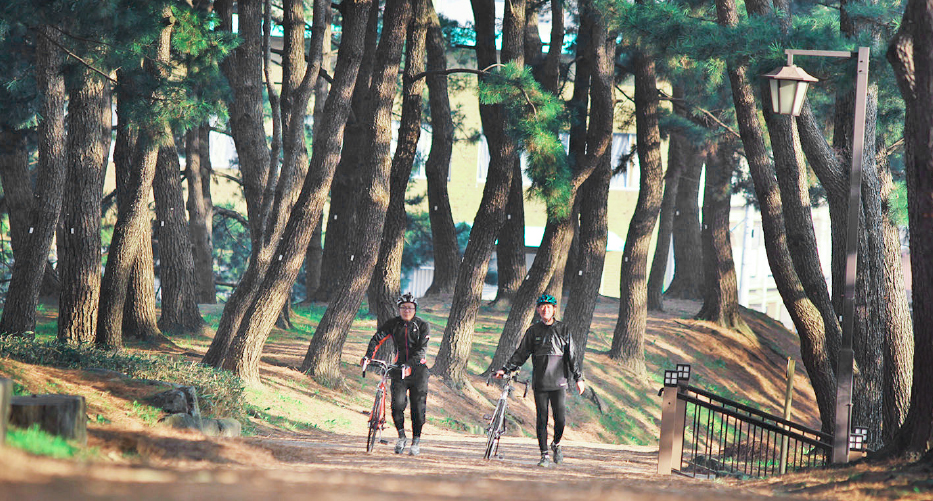
From Kurosaki-juku Head to Koyanose-juku, Kita-Kyushu City’s Last Inn Town.
From Kurosaki head directly south. After going along Prefectural Routes 200 and 211 which have a lot of vehicles travelling on them, you will eventually enter Koyanose-juku. Koyanose is an important water and land transportation location on the bank of the Onga River, and prospered as the second inn town on the Nagasaki Kaido Road. It still preserves its old townscape today and scattered throughout the area are cafes and galleries which were once old houses and were renovated to become stylish and fashionable.
Learn About the History of Nagasaki Kaido Road at the Koyanose-juku, Your Destination
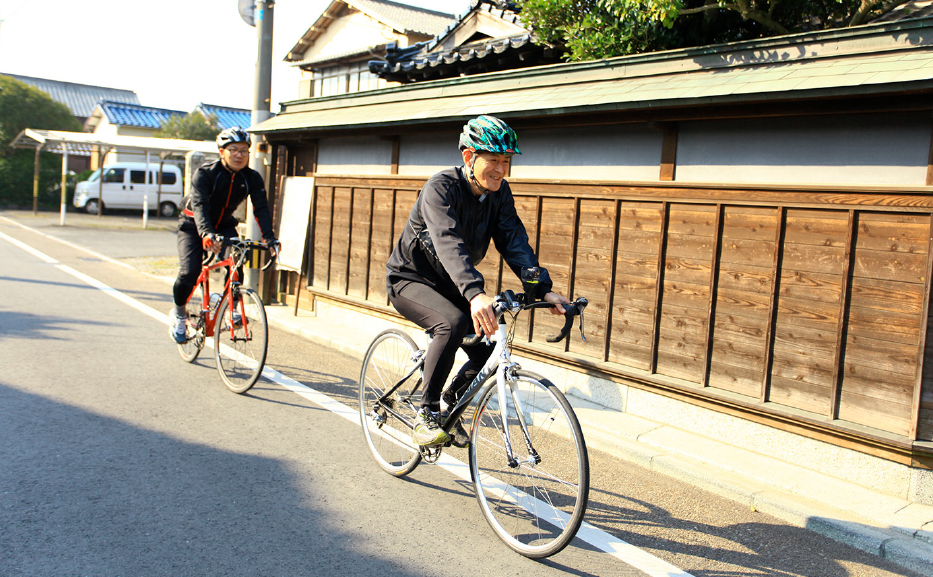
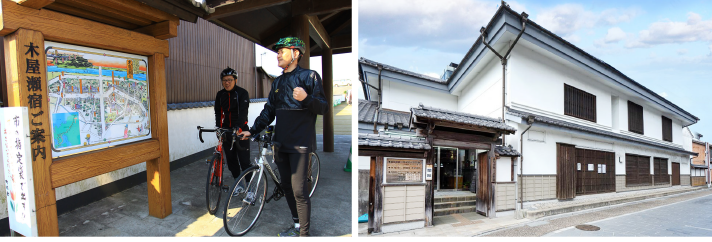
Koyanose is also home to the Michino Kyodo Archives where you can learn all about the Nagasaki Kaido Road. Consider stopping at the end of your pottering trip. It is the perfect place to contemplate history as you recall the Nagasaki Kaido Road you just spent the day travelling along.
